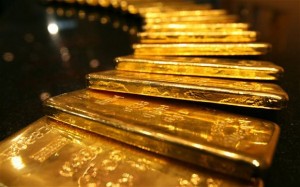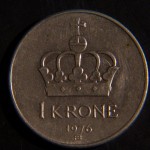 Gold fell on Thursday as positive U.S. economic data spurred once again concern of an earlier than expected Quantitative Easing scale back.
Gold fell on Thursday as positive U.S. economic data spurred once again concern of an earlier than expected Quantitative Easing scale back.
On the Comex division of the New York Mercantile Exchange, gold futures for July delivery lost 0.97% for the day, standing at $1 378.45 a troy ounce at 13:29 GMT. Prices varied between daily low of $1 377.15 and high at $1 394.25.
Gold prices fell to a lowest level for the day after U.S., published at 12:30 GMT, showed improvement of the worlds biggest economy, which could cause a shift in monetary stimulus direction. Retail Sales for May exceeded expectations of a 0.4% increase and stood at 0.6%, compared to a 0.1% gain in the preceding month. Rising Retail Sales are a sign of economy growth as consumers confidence rises. Core retail sales, retail sales less autos, matched projections of a 0.3% gain, which surpassed the preceding months figure of a 0.1% increase. Initial Jobless Claims also outperformed expectations, by 11 000, and fell to 334 000 during the week ending June 8, compared to 346 000 in the preceding week. The Import Price Index failed to surpass expectations, slipping 0.6% on a monthly basis and 1.9% on annual, compared to projections of 0.0% and a 1.4% decrease respectively.
However, positive news outweighed the Import Price Index, causing gold to plunge as gold prices have largely been tracking the shifting expectations regarding Feds bond purchasing program. A possible earlier-than-expected Quantitative Easing scale back would deliver a massive shock to gold prices. Investors buy the yellow metal in order to hedge against risks of inflation, which could be spurred by Fed’s bond purchasing program.
Japan’s central bank, Bank of Japan, took a decision on Tuesday not to expand its monetary stimulus further. BoJ stuck to its April position to increase the monetary base by 60 trillion to 70 trillion yen a year. This spurred speculation whether the U.S. central bank will follow up and reduce its own bond purchases.
Ben Bernanke, Fed chairman, said Fed’s monetary stimulus could be scaled back if the U.S. labor market showed stable improvement. According to a Bloomberg survey of economists last week, the U.S. central bank will reduce its monetary easing program to $65 billion a month in October.
Currently, the precious metal is drawing support from the weakened dollar, which has been losing ground to its major counterparts for most of the week. The greenback and dollar-priced commodities generally trade inversely as a weakened dollar boosts raw materials appeal as an alternative investment and makes them cheaper for foreign currency holders.
Elsewhere on the market, silver, platinum and palladium followed golds direction and marked losses on the day. Silver futures for July delivery stood at $21.665 an ounce at 13:22 GMT, down 0.60%, ranging between daily high and low at $21.913 and $21.603 respectively. Platinum for July delivery, which is widely used in both industry and jewelry sectors, stood at $1 462.70 an ounce at 13:24 GMT, down 1.32% for the day. Palladium September futures marked a new daily low, plunging 1.82%. The metal traded at $742.80 per troy ounce at 13:27 GMT, after it hit earlier in the session a days high of $760.80 an ounce.





